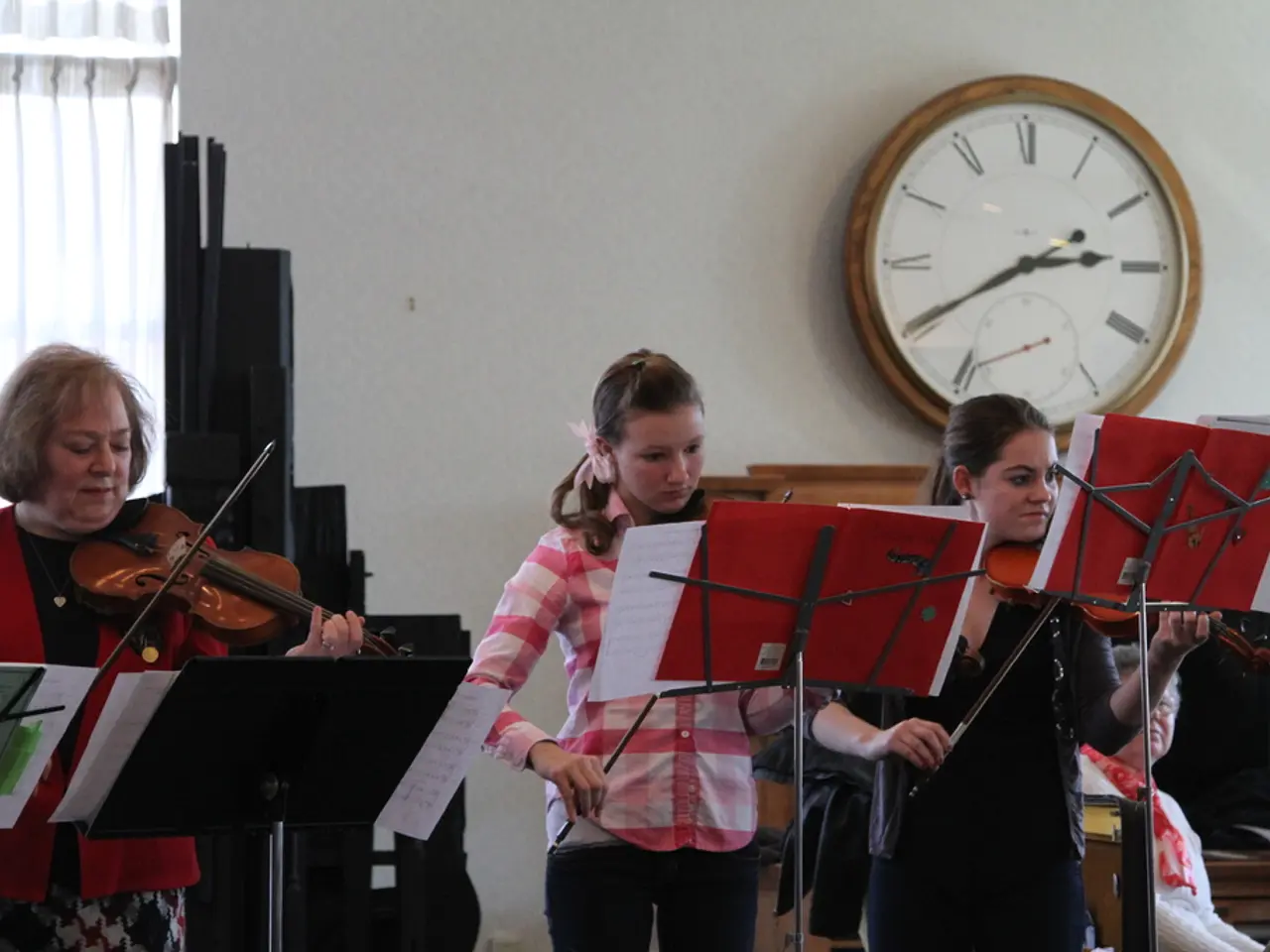Mass Gathering Fetes Music's Ability to Bond Art and Science
The Science Museum: A Nexus of Arts and Science
The Science Museum in London is currently hosting two captivating exhibitions that showcase the interplay between art, science, and human ingenuity.
Firstly, the museum's major exhibition, titled Future of Food, delves into the intricate world of food production, exploring how humans grow, produce, and consume food, as well as the environmental and social impacts of our current food systems. The exhibition highlights scientific and technological innovations like biotech and sustainable farming/fishing, which could potentially reshape food production for the future.
In a unique blend of art and science, the museum has recently hosted a performance in a gallery telling the story of human endeavor and ingenuity. The performance, specially arranged and conducted by Ben Palmer, featured a 90-piece orchestra made up of Royal College of Music students. They performed parts of Holst's Planets, creating a symphony of sound that echoed through the halls of the museum. This performance was part of a museum tradition exploring music and sound.
The Science Museum's collection is rich with items directly or indirectly connected to music and sound. One such item is Leonardo da Vinci's design for a 'viola organista', a musical instrument that combines elements of the viola and the organ. The design was brought to life in 2013 when it was built and played by Polish pianist Slawomir Zubrzycki.
Leonardo da Vinci, an incredible artist and a brilliant, insatiably curious engineer, was known for his wide-ranging interests. His designs spanned various fields, including music, art, and engineering.
The Science Museum's exhibitions, concerts, and projects reflect the museum's commitment to science. Over the years, the museum has held exhibitions on the exponential horn and the birth of electronic music. It has also partnered with institutions like the Royal College of Music to bring music to its visitors.
The museum's historical significance is evident in its collection of artifacts. These include Stephenson's Rocket, Crick and Watson's DNA model, and the Apollo 10 command module. The museum has even hosted exhibitions on television and held the Noise Abatement Exhibition opened by HG Wells in 1935.
In a forward-thinking move, the Science Museum is currently engaged in a citizen science project called Hooked on Music. This project is part of a wider initiative to study dementia and its effects on memory and cognition.
As the Science Museum continues to evolve, it remains at the nexus between arts and science, providing a platform for exploration, innovation, and creativity.
- The Science Museum, with its commitment to science, has also integrated elements of education-and-self-development, entertainment, and music, as evident in their citizen science project on music called Hooked on Music.
- Beyond the Future of Food exhibition, the Science Museum in London has a rich history of intertwining science with arts, demonstrating this through performances like the symphony of Holst's Planets, showcasing the connection between music and science.




